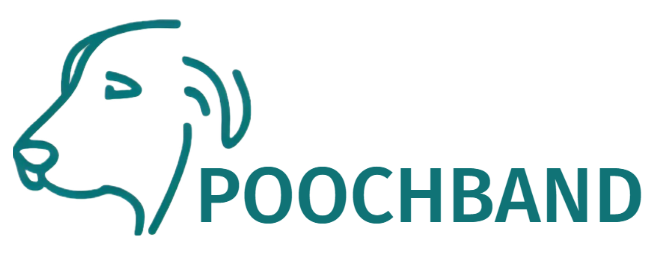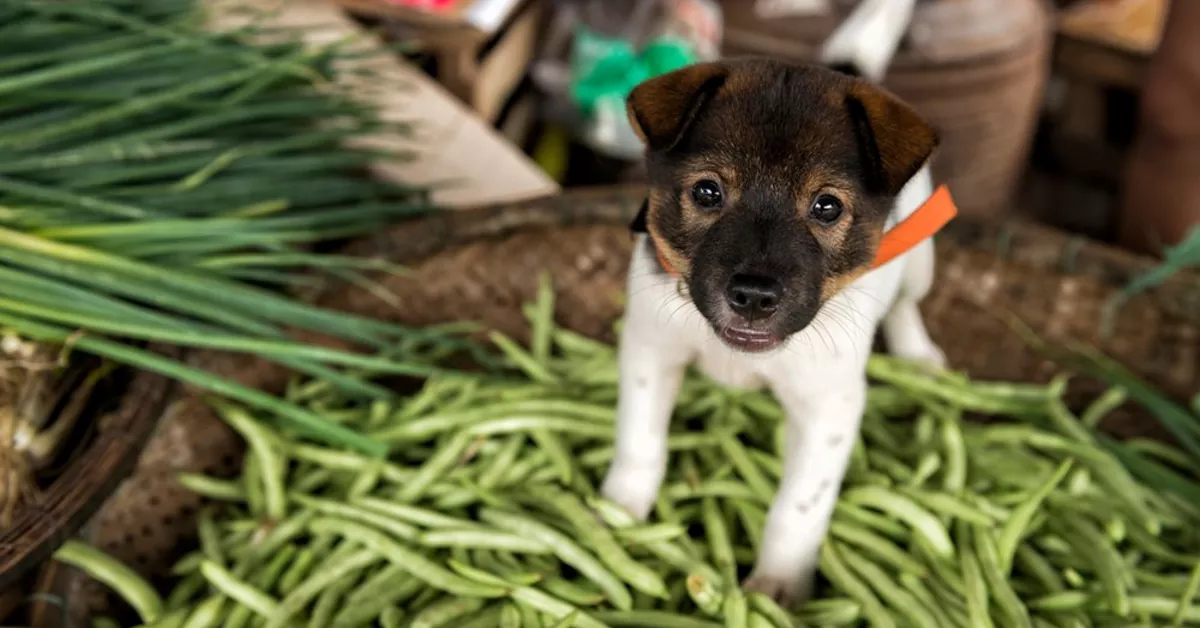We all know that vegetables are a vital element of a healthy human diet, but are greens also beneficial to pets? Green beans are one of the healthiest dog treats since they are low in calories and high in fiber. While dogs are predominantly carnivores, their dietary requirements have evolved along with human civilization. While green beans might be an excellent weight-loss snack, they should never be substituted for your dog’s normal meals. However, like with other foods, moderation is essential. Here are some things to consider while giving green beans to your dog.
Can Dogs Have Green Beans?
Yes, dogs can have green beans, including canned, steamed, boiled, roasted, and dried varieties, as well as raw green beans! Most dogs will enjoy their taste because they are crunchy with an almost sweet flavor.
Are Green Beans Good for Dogs?
Green beans are just as healthy and nutritious for our pets as they are for us! They are a fantastic low-calorie treat option for adult dogs and puppies in moderation. Remember that puppies have more sensitive stomachs, and the high fiber content of green beans may irritate their tummies.
Green beans provide dogs with the following nutrients:
- Protein
- Fiber
- Iron
- Folate
- Calcium
- Potassium
- Magnesium
- Vitamin B6
- Vitamin A
- Vitamin C
- Vitamin K
- Antioxidants
According to the AKC, more than half of all dogs in the United States are overweight. Obesity is a severe concern since it can lead to a variety of health problems, including high blood pressure, diabetes, orthopedic problems, osteoarthritis, renal disease, heart disease, and some types of cancer. Additionally, obesity can shorten your pet’s life by up to two years!
Traditional dog biscuits can be replaced with green beans as a treat, which can help obese dogs lose weight by reducing their calorie intake. Also, you can add green beans to your dog’s bowl to make up for any food reductions made for weight loss.
What Is the Green Bean Diet?
This diet progressively replaces a portion of a dog’s food with green beans.
It works by substituting green beans for 10% of your dog’s diet, gradually increasing up to 50% to enable quick weight loss for overweight dogs. We advise against following this diet since it can be harmful to your dog’s health, while ordinary green beans are fine in small amounts, the majority of your dog’s meal should contribute to their total nutritional needs. As previously said, green beans contain vitamins and minerals, but they do not contain all a dog requires to flourish, therefore giving green beans instead of their regular meal may result in nutritional inadequacies.
To prevent this, make sure that the majority of your dog’s diet consists of high-quality dog food, which has everything your pooch requires to keep fit and healthy.
If your dog is overweight and you’re having trouble getting them to lose weight, consult your veterinarian. They will be able to create a customized weight loss program based on your dog’s specific nutritional and health demands.
Can Dogs Eat Raw Green Beans?
Yes, dogs can eat both raw and cooked green beans. However, raw green beans contain lecithin proteins that may upset certain dogs’ stomachs and cause nausea, vomiting, and diarrhea. Cooking the beans is the most effective solution to this problem. It’s crucial to remember that cooking does deplete some essential nutrients, so don’t overdo it. The beans should work if you lightly steam them before giving them to your dog.
Avoid using ingredients like spices, salt, butter, oil, garlic, and onions while preparing green beans. Many of these compounds are harmful or even toxic to dogs. For instance, excessive amounts of salt and butter could damage your dog’s heart, whilst onions can lead to blood problems.
Can Dogs Eat Canned Green Beans?
Although the nutritional contents of fresh and canned green beans are relatively similar, there is one significant difference between the two—the salt!
Green beans frequently have a lot of salt added to them. They are incredibly unhealthy for your dog, especially over time, even though they taste fantastic. High blood pressure, obesity, and heart disease can all be caused by excessive sodium intake.
You can avoid this by only using fresh green beans or no-salt-added canned green beans.
Can Dogs Eat Green Beans From Frozen?
Your dog is likely to like the crunch of frozen green beans as well, and they are another wholesome treat. Frozen green beans can easily become a choking danger and may even result in an intestinal blockage. Make sure there are no additional ingredients when you cook frozen green beans.
Can Dogs Have Green Bean Casserole?
Even while people enjoy green bean casserole during the holidays, your dog shouldn’t eat this as a safe or wholesome table scrap. Along with the abundance of bad ingredients like sugars, salts, and fats, green bean casserole sometimes contains both onion and garlic, which are toxic to dogs.
How Much Green Beans Can I Give My Dog?
Always consult your veterinarian before introducing anything new to your dog’s food, and always start slowly. Start with one green bean and wait 24 hours to see if any negative reactions occur. Similar to people, dogs can also develop allergies to specific vegetables, though this is uncommon. Green beans’ additional fiber may also contribute to mild stomach discomfort or gas. A smaller dog can tolerate one or two beans while larger breeds can handle more.
How to Share Green Beans with Your Dog in a Safe Way
You might be considering offering your dog green beans as a nutritious snack. That’s fantastic, but there are a few things you should know before you begin. Even though green beans are beneficial to dogs, they should not constitute more than 10% of your dog’s daily diet. The majority of their diet should come from their regular dog food, which has all of the vital nutrients they require to keep healthy.
Here are some pointers for feeding green beans to your dog:
1. Consider Size: The amount of food your dog should consume is determined by their size. Small dogs (less than 20 pounds) can eat one or two green beans, whereas large dogs can eat a small bunch.
2. Prepare them properly: If you’re giving your dog frozen or canned green beans, there’s not much you need to do. If you’re using fresh green beans, wash them and remove the stems and strings first. Cut them into little pieces so your dog may easily consume them.
3. No Seasoning: Dogs do not require fancy flavors like we do. The tastiest green beans are plain. Garlic, onion, and salt are all extremely toxic to dogs. To keep your dog safe and healthy, stick to plain green beans.
4. Treat Substitution: Green beans can be substituted for treats but not for normal meals. If your dog needs to reduce weight, you can treat them with green beans.
They can also be used as a tasty topping to encourage your dog to eat, but they should not be used in place of their main meals.
5. Introduce Slowly: New meals might upset a dog’s stomach, especially if they are sensitive. Green beans contain fiber, which is beneficial, but eating too much at once might induce stomach upset. So start with a small amount and see how it goes.
6. Watch and Wait: After sampling green beans, keep a watch on your dog. Some dogs may have gastrointestinal distress. If your dog develops stomach problems, such as gas or diarrhea, it will typically go away on its own. However, if it is severe or lasts longer than a day, consult your veterinarian
7. Not Every Day: Green beans aren’t something your dog should eat every day. Don’t give them every day unless your vet says so. A couple of times a week as a treat is sufficient.
Remember that your dog’s health is essential, so go slowly, and watch how they react. Sharing green beans with your pet can be a fun and healthful treat!
Conclusion
Green beans are a delightful, nutritious treat for your dog that is also a good alternative to some of the more extensively processed commercial dog treats on the market. Before introducing a new food to your dog’s diet, we always recommend consulting with your veterinarian, especially if you are considering a weight loss program.
Green beans should not make up more than 10% of your dog’s food, and excessive amounts can induce nausea, vomiting, or diarrhea.
While it may be beneficial for weight loss, the problem with the green bean diet is that your dog may begin to lose out on vital nutrients that are not found in green beans, such as certain amino acids, lipids, vitamins, and minerals.
It’s also not a good idea to start your dog on a weight-loss plan without first checking with your vet. Something other than their nutrition could be causing their weight gain, such as diabetes, hypothyroidism, or another major health concern.
Also read:

